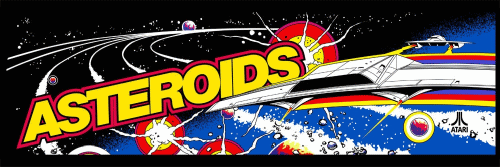
Lunar Lander is one of the earliest arcade games to simulate real-world physics, creating a unique gameplay experience that challenged players' precision and strategy. Released by Atari in August 1979, it was inspired by earlier computer-based lunar landing simulations that had appeared on mainframe and minicomputers in the late 1960s and early 1970s. These early text-based games, like those programmed for the DEC PDP-8 and PDP-11, laid the conceptual groundwork by asking players to control a lunar module's descent using limited fuel reserves while avoiding a crash landing.
The first lunar landing computer game is widely attributed to Jim Storer, who created it in 1969 while a student at Lexington High School in Massachuswrra. His version, known as LUNAR, was written in Focal, a programming language used on Digital Equipment Corporation (DEC) computers, specifically the DEC PDP-8/I.
The game was text-based and simulated the landing of a lunar module on the moon's surface. Players had to manage fuel consumption and thruster power to safely land without crashing. The player entered numerical values to control the thrust, and the program calculated the descent based on gravity and inertia, providing feedback on altitude, velocity, and fuel status.
Shortly after Storer's creation, various versions of the game appeared on other systems, including implementations in BASIC and FORTRAN, as it became a popular educational tool for teaching programming and physics concepts. One of the most famous versions was included in Creative Computing magazine in the 1970s, further popularizing the game.
The arcade version developed by Atari marked a significant evolution in interactive gaming. Ed Logg, one of Atari’s pioneering game designers, led the creation of Lunar Lander. The game utilized vector graphics, a then-novel technology that allowed for sharp, scalable line-drawn visuals rather than the pixelated graphics typical of raster displays. This gave Lunar Lander its distinctive, minimalist aesthetic, with the barren, cratered lunar surface rendered in glowing lines on a dark background, evocative of the space exploration theme popularized by the Apollo missions.
In the game, players control a lunar module descending toward the moon's surface. The goal is to land safely on designated landing pads while conserving fuel. The game’s mechanics are centered on realistic gravitational effects and inertia, requiring careful use of thrusters to decelerate and navigate. Successful landings earn points, with more difficult landing sites offering higher rewards. However, running out of fuel or descending too quickly leads to a crash, depicted with dramatic on-screen visuals of the destroyed module.
Lunar Lander was notable for its physical cabinet design, which featured a large, analog-style thrust control lever that enhanced the tactile, immersive experience. This control scheme contributed to the game’s reputation for being challenging but rewarding, as players needed both skill and finesse to master it.
Although Lunar Lander was not as commercially successful as some of Atari’s later releases, it garnered critical acclaim and is considered a foundational title in the simulation genre. It was soon overshadowed by the release of Asteroids, which used the same vector display technology and quickly became a massive hit. As a result, many Lunar Lander cabinets were converted into Asteroids machines to capitalize on the latter’s popularity.
In 2024, retired software engineer Martin C. Martin discovered a 55-year-old bug in the original Lunar Lander computer game, developed by Jim Storer in 1969. Martin found that the game's physics code miscalculated the lander's position during descent. Specifically, the code did not correctly account for the lander's velocity and acceleration over time, leading to inaccuracies in the simulation. This meant that the lander's position was not updated accurately based on the thrust applied by the player, resulting in a less precise simulation of the lunar landing process. This oversight had remained unnoticed for over five decades.

